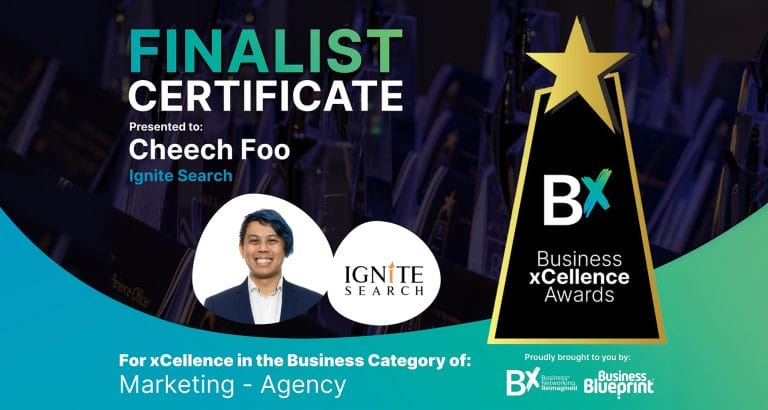The search landscape is expanding at a rapid pace. Individuals are increasingly turning to a variety of platforms for their search requirements, rather than solely depending on traditional Google searches.
In this evolving landscape, the visibility of a brand is paramount, as consumers are inundated with messages at every scroll, click, and swipe.
With recent advancements such as Search Generative Experience and Google’s Perspectives feeds, securing a dominant position in the SERPs is a primary focus for SEO experts.
From Google’s familiar SERPs to the dynamic worlds of TikTok and Instagram reels, each platform presents a distinct opportunity for brands to share their narratives.
However, merely having a presence is insufficient. It’s about crafting compelling, optimised, relevant content that resonates with your audience, aligns with your search strategies, and advances your business objectives.
This article will delve into how your brand can triumph in the search universe by creating authentic, engaging, and valuable content that captures and maintains the attention of consumers.

Understand What Content You Need To Create (And Where To Put It)
Previously, long-form text such as blogs or guides was the norm. However, in 2023, users engage with various content types, so it’s important to match the intent behind search queries.
The aim is to discern the preferences of your users. For instance, if video content is popular on YouTube and TikTok for certain queries, consider creating videos. If trends on Pinterest indicate a preference for images, explore that avenue.
With Google Perspectives, understanding query trends becomes easier, as it provides data on search volumes. This can help determine the content types users prefer for certain queries.
In the short term, use tools like Glimpse or Google Trends to gain insights into trending topics and user expectations around content for specific keywords or hashtags.
This approach has become essential in my brand content strategies. It goes beyond analyzing Google SERP features and includes understanding where queries are most prominent to effectively place content.
This helps identify opportunities for video content, creator-led initiatives, or reaffirming Google as the primary platform.
Ultimately, this method ensures your strategy is user-centric, rather than solely focused on Google.
Customise Your Content For Each Platform
In the evolving search universe, each content platform is unique, requiring brands to create platform-specific content to effectively connect with their audience. Merely having a presence is not enough; content must feel native to each platform. For instance, TikTok content should align with its style of vertical, short-form videos. Here are some examples:
Native Content Creation: Content should not be created once and distributed universally. It needs to be crafted or tailored for each platform, much like translating a message into different languages while keeping the core message consistent.
Understanding Platform Nuances: Each platform has its own rules, from content duration and format to engagement metrics. Respecting these nuances ensures that content feels organic and relevant.
Audience Expectations: Users have different expectations on each platform, and brands must align their content with these expectations and the platform experience.
Consistency in Diversity: While the format and delivery method may vary across platforms, the brand voice and core message should remain consistent, strengthening brand identity.
Staying Updated: The search universe is constantly changing with shifting platform preferences, updated algorithms, and evolving user behaviours. Brands must stay informed and adapt their strategies based on these changes.
H2: Adapt Your Strategies for the Future A robust content strategy goes beyond the present, anticipating future developments. This involves staying open to learning and continuously improving content, keeping up with evolving trends and tools, and avoiding becoming outdated.
Action is key, not just knowledge. Develop a strategy that is both grounded and adaptable. As new platforms arise and user preferences evolve, brands need to be flexible enough to adjust without completely overhauling their approach.
This flexibility should be paired with a willingness to embrace new technologies, from AI-driven analytics to VR experiences, and tools like Google Perspectives or SGE.
Yet, it’s vital to always prioritise the audience’s point of view. Keep abreast of changing search behaviours and regularly review analytics and feedback. This helps understand current opinions and anticipate future needs.
Prepare for uncertainty with scenario planning. Imagine various futures for the search landscape and devise strategies to position your brand effectively in these potential scenarios.
By doing this, you create a content strategy that’s not only in sync with today’s digital world but also prepared to adapt to future changes.

It’s Time To Collaborate
Collaborations and partnerships have become key strategies for expanding reach, diversifying content, and connecting with new audiences, all while demonstrating expertise.
These strategic alliances offer more than resource sharing. They can:
- Introduce fresh perspectives.
- Enhance credibility.
- Foster trust among audiences.
These elements are crucial for the factors previously discussed.
By partnering with influencers whose values and audiences align with your brand, you can co-create content that brings varied viewpoints yet remains consistent in messaging.
Such partnerships enable the exploration of new content formats and platforms, helping to reach new audiences or re-engage existing ones. Brands can extend their online presence beyond Google search results, achieving wider digital influence.
Moreover, these collaborations facilitate cross-promotion, benefiting both parties through shared audiences and contributing to joint growth.
The scope of collaboration extends beyond content creation. Activities like joint webinars, shared research, or collaborative events deepen engagement and establish both partners as thought leaders.










